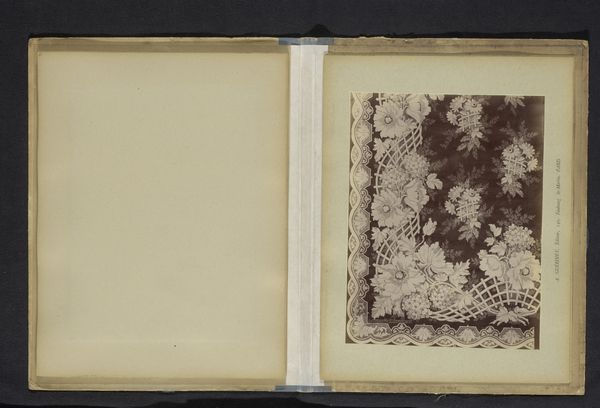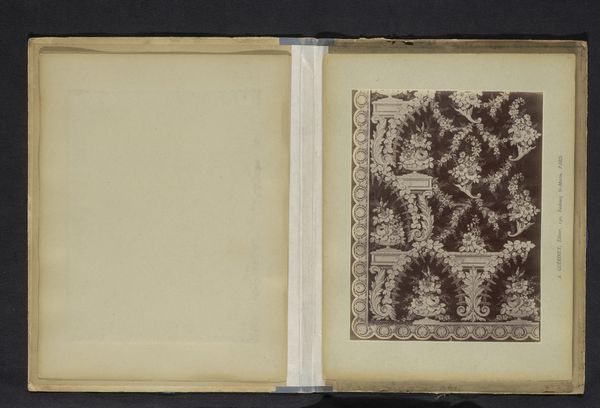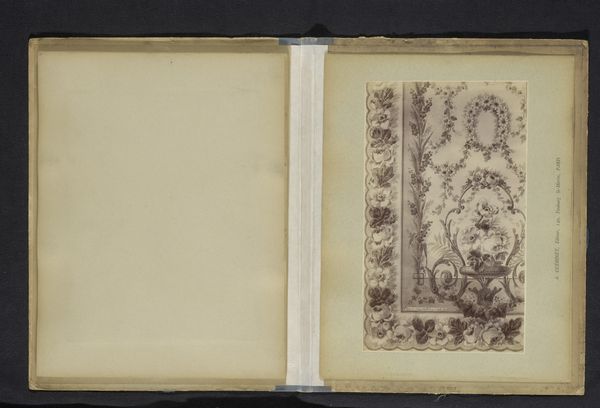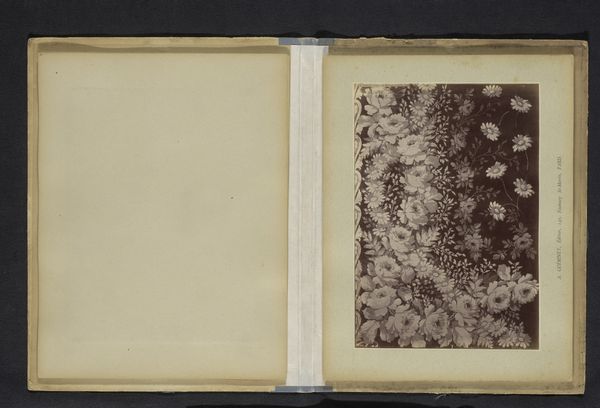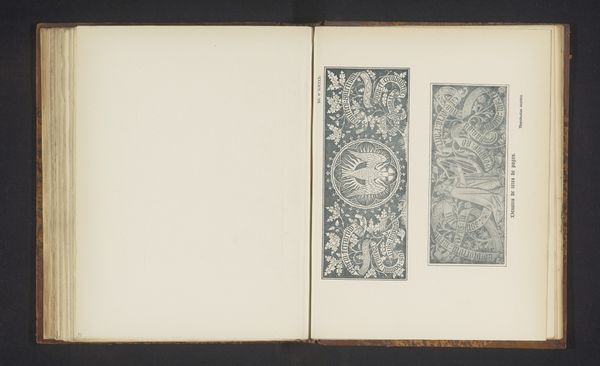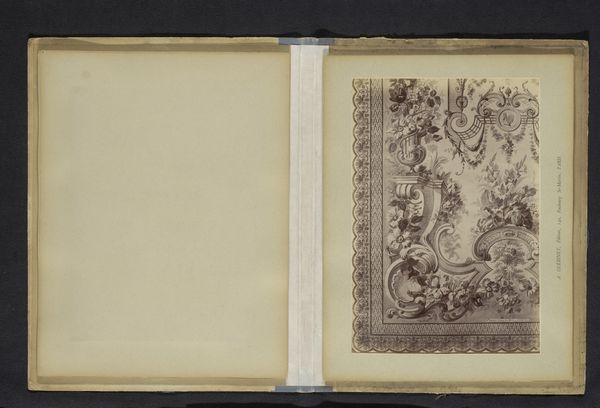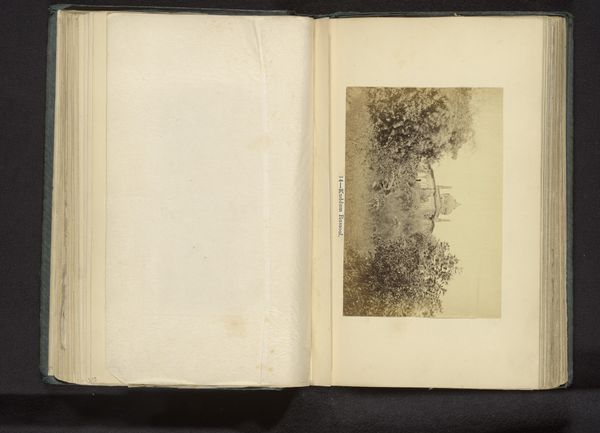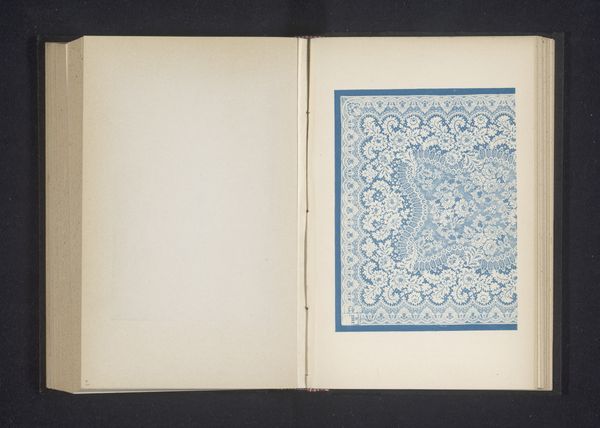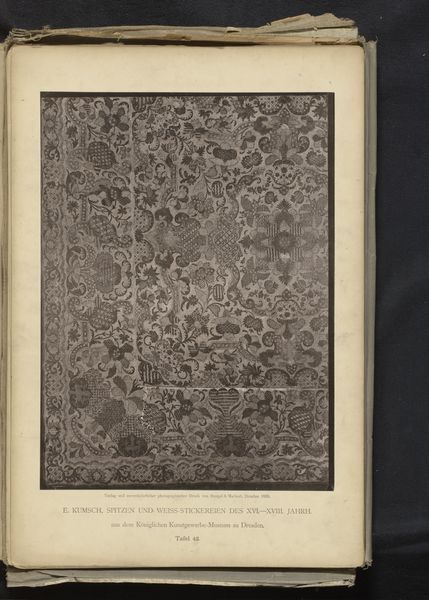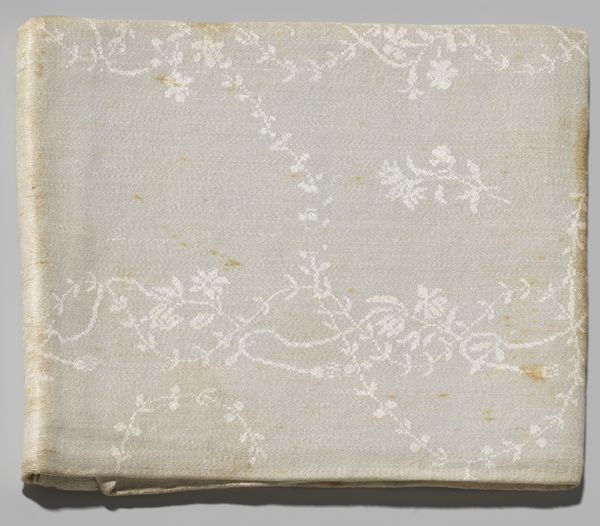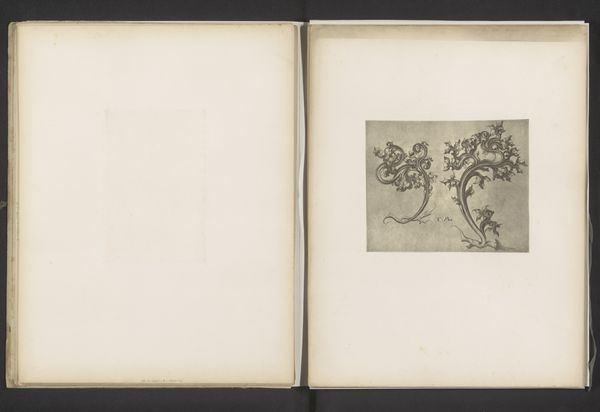
Dimensions: height 257 mm, width 169 mm
Copyright: Rijks Museum: Open Domain
Editor: We're looking at a "Fotoreproductie van een decoratief bloemenpatroon"—that translates to photographic reproduction of a decorative flower pattern. It's a print on paper, dating from before 1900. It feels like something you'd find on vintage wallpaper, and I find the monochromatic color palette gives it a melancholic mood. What visual cues strike you? Curator: The persistence of floral motifs across cultures speaks volumes. Flowers, especially in decorative arts like this, often symbolize renewal, beauty, and even the fleeting nature of life. The repetition here might evoke ideas of abundance and prosperity. I'm curious—does this aesthetic echo any specific era or cultural movement to you? Think of how Impressionism toyed with capturing ephemeral moments. Editor: I see the loose, almost sketch-like quality in the floral rendering, a hint of Impressionism perhaps? But is it about capturing a moment or creating a sense of timeless elegance, considering it’s a decorative pattern? Curator: Precisely. Decorative arts often serve a different function than fine art. They aim to create an environment, to shape experience through repeated motifs, suggesting an eternal spring. What does that repetition spark in you – does it evoke familiarity or constraint? Editor: I suppose it's both, comforting and maybe a little suffocating at the same time? It’s interesting how a simple pattern can hold so much cultural weight and elicit conflicting emotions. Curator: Indeed. This piece is a beautiful reminder of how seemingly simple imagery carries layers of emotional, cultural, and even psychological significance. Editor: Thanks, I'll definitely look at decorative art differently now. Curator: As will I, remembering our exchange.
Comments
No comments
Be the first to comment and join the conversation on the ultimate creative platform.

